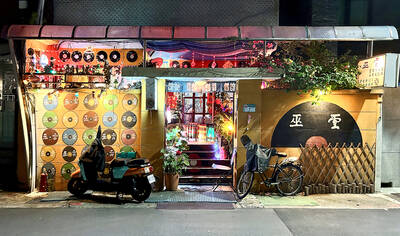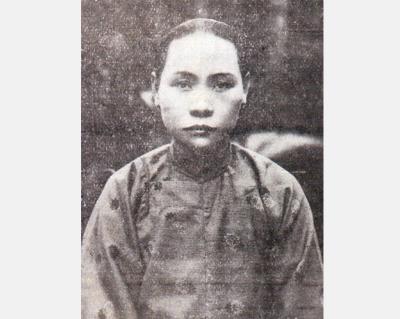For centuries passers-by have thrown rocks at an ornate tomb in Jerusalem's Kidron Valley, reviled as the traditional burial place of the biblical King David's villainous son Absalom.
But in one of those strange twists unique to the Holy Land -- where tombs can post-date by a millennium those believed buried there -- an inscription found on the crypt now points to it belonging not to Absalom but rather John the Baptist's father, Zacharias, and maybe even James, who some Christians regard as the brother of Jesus.

PHOTO: REUTERS
"It could be the most exciting discovery in absolutely decades," said Professor James Strange, an archeologist at the University of South Florida who specializes in the Christian and Byzantine periods.

PHOTO: REUTERS
Early Christian writings refer to a tomb in Jerusalem where the bodies of Zacharias, James and Simeon -- another figure mentioned in the New Testament's Gospel of Saint Luke -- were buried. But the tradition was lost centuries ago.
Incredibly, the eye-catching mausoleum is a landmark in Jerusalem's Kidron Valley but has been mistaken for the tomb of Absalom, who actually died 1,000 years before the edifice was erected in the first century AD.
The mistaken association with Absalom inspired passers-by to pelt the tomb with stones as a sign of disgust with the behavior of the Israelite prince who rebelled against his father.
"The stones wore away the surface, especially the inscription," said Joe Zias, the scholar who discovered the inscription. "It was no wonder people couldn't read the thing."
Chiselled into slabs of limestone, the Greek writing was so faded from centuries of defacement by stone throwers that nobody noticed it until Zias saw the letter alpha in an old black and white photograph taken of the tomb's entrance.
Since the photograph was taken about 30 years ago, the ancient burial ground where the tomb is located has become derelict, attracting local drug dealers and criminals. An addict even squats in the burial chamber itself.
Zias was undeterred. He sat in front of the tomb for months on end until he found that the inscription could be seen only before sunset in the summer -- the time of year that the photograph was taken -- when a combination of light and shade made some letters visible.
Zias, a physical anthropologist who studies ancient bones, then teamed up with one of the world's experts on ancient writings, Father Emile Puech, to decipher the text.
"I think the people were maybe bilingual. Maybe they thought in Aramaic and then translated it into Greek," said Puech of the inscription which he has dated to about AD 350.
In large letters that were once painted black so they could be seen from across the valley, the inscription reads: "This is the funerary monument of Zacharias, the martyr, the very pious priest, father of John."
Puech believes it was carved by monks around a decade after Christianity became the official religion of the Roman Empire.
During that period Christians began to set up shrines connected to Jesus, among them Jerusalem's Church of the Holy Sepulchre, the traditional site of the crucifixion.
While no one can be certain the tomb really was Zacharias' burial place, experts say the shrines located when Christianity changed from being a persecuted religion to a powerful one tended to be the most authentic.
"In the fourth century they had at least somebody to talk to who knew something [about locations of events chronicled in the New Testament]," said Strange.
Zias and Puech are now trying to decipher another inscription along the side of the tomb. The only word they can currently read is Simeon, who according to the Gospel of Saint Luke blessed baby Jesus as the future messiah.
Zias now hopes to find an inscription linking James the Just -- whom some Christians believe to be Jesus' brother -- to the tomb as according to Christian tradition, Zacharias, Simeon and James were buried together. Roman Catholics -- who believe Jesus' mother Mary was a virgin all her life -- say James was his cousin.
"There is room for three people [in the tomb]. There are three burial niches so it certainly fits," Zias said.
He is bitterly aware that any discoveries related to James may be greeted with skepticism by the archeological world which is still reeling from a scandal over an ossuary or burial box that purported to be that of James.
It has since been declared a fake by a panel of leading Israeli archeologists. But the hoax proved to be very lucrative for those involved.
In contrast, Zias has had to go into debt trying to finance the laborious process of making plaster casts of the tomb's almost illegible inscriptions so they can be deciphered.
"The irony is that these guys came up with an ossuary that is a forgery and make millions of dollars," Zias said. "Here we come but with something that is authentic, unchallenged and we have to go on all fours for funding."

The Lee (李) family migrated to Taiwan in trickles many decades ago. Born in Myanmar, they are ethnically Chinese and their first language is Yunnanese, from China’s Yunnan Province. Today, they run a cozy little restaurant in Taipei’s student stomping ground, near National Taiwan University (NTU), serving up a daily pre-selected menu that pays homage to their blended Yunnan-Burmese heritage, where lemongrass and curry leaves sit beside century egg and pickled woodear mushrooms. Wu Yun (巫雲) is more akin to a family home that has set up tables and chairs and welcomed strangers to cozy up and share a meal

Dec. 8 to Dec. 14 Chang-Lee Te-ho (張李德和) had her father’s words etched into stone as her personal motto: “Even as a woman, you should master at least one art.” She went on to excel in seven — classical poetry, lyrical poetry, calligraphy, painting, music, chess and embroidery — and was also a respected educator, charity organizer and provincial assemblywoman. Among her many monikers was “Poetry Mother” (詩媽). While her father Lee Chao-yuan’s (李昭元) phrasing reflected the social norms of the 1890s, it was relatively progressive for the time. He personally taught Chang-Lee the Chinese classics until she entered public

Last week writer Wei Lingling (魏玲靈) unloaded a remarkably conventional pro-China column in the Wall Street Journal (“From Bush’s Rebuke to Trump’s Whisper: Navigating a Geopolitical Flashpoint,” Dec 2, 2025). Wei alleged that in a phone call, US President Donald Trump advised Japanese Prime Minister Sanae Takaichi not to provoke the People’s Republic of China (PRC) over Taiwan. Wei’s claim was categorically denied by Japanese government sources. Trump’s call to Takaichi, Wei said, was just like the moment in 2003 when former US president George Bush stood next to former Chinese premier Wen Jia-bao (溫家寶) and criticized former president Chen

President William Lai (賴清德) has proposed a NT$1.25 trillion (US$40 billion) special eight-year budget that intends to bolster Taiwan’s national defense, with a “T-Dome” plan to create “an unassailable Taiwan, safeguarded by innovation and technology” as its centerpiece. This is an interesting test for the Chinese Nationalist Party (KMT), and how they handle it will likely provide some answers as to where the party currently stands. Naturally, the Lai administration and his Democratic Progressive Party (DPP) are for it, as are the Americans. The Chinese Communist Party (CCP) is not. The interests and agendas of those three are clear, but